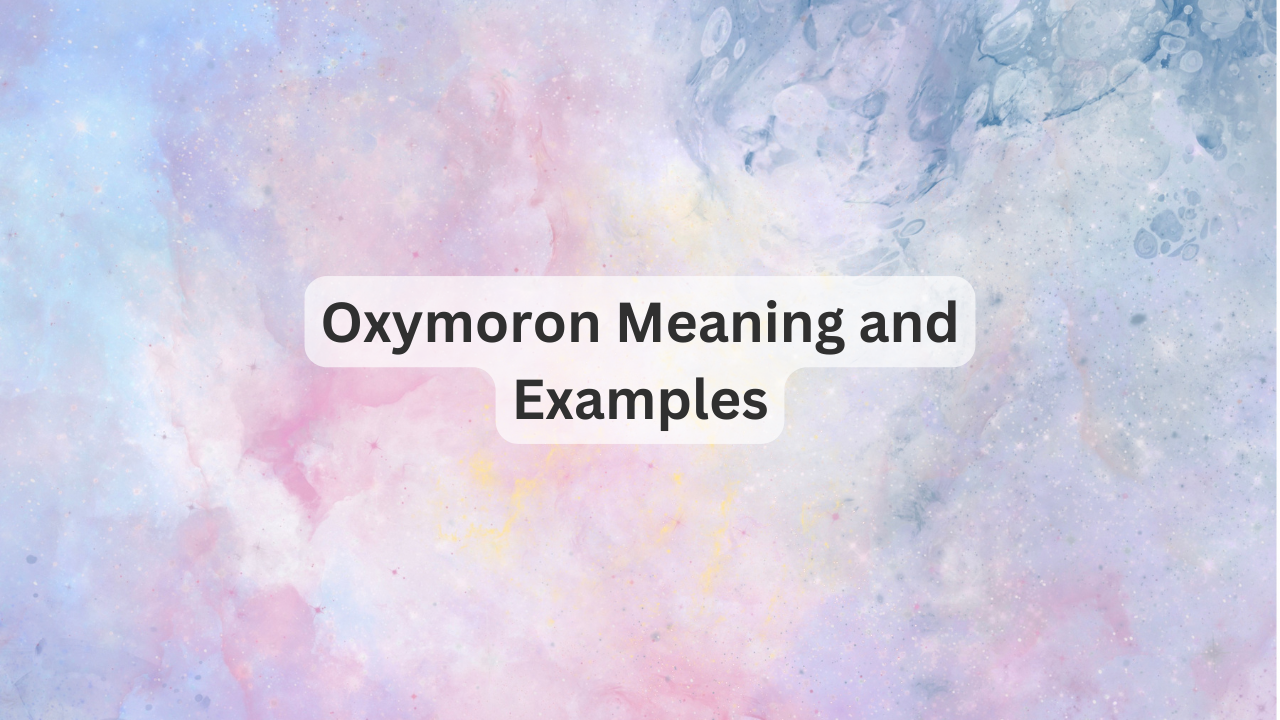Welcome to the wonderful world of oxymorons, where opposites not only attract, but actually make sense together. An oxymoron is a figure of speech that combines two contradictory or opposing terms to create a new, often surprising, meaning. It’s like language doing a little verbal gymnastics—things that shouldn’t work together suddenly click, often leaving us with a chuckle or a deeper thought.
Oxymorons are those delightful little contradictions that we use all the time without even realizing it. They’re the literary equivalent of saying, “I’m seriously joking,” and somehow, we all know exactly what that means. Ready to dive in and explore how opposites create harmony in the most unexpected way? Let’s go!
Oxymoron Meaning: A Paradox in Two Words
An oxymoron is a short phrase (usually two words) that brings together terms that seem to contradict each other. Despite their conflicting nature, these phrases manage to create a fresh, new idea that often feels clever or dramatic.
Think of it as the ultimate linguistic frenemy situation—where the words can’t seem to agree but still make perfect sense together.
Oxymoron Examples That Are Seriously Funny (Or Funily Serious?)
- Deafening silence
(Because silence can be loud enough to make your ears ring, right?) - Jumbo shrimp
(A small seafood snack that’s… jumbo? Sure, why not.) - Act naturally
(No pressure, but also, be yourself… somehow.) - Bittersweet
(Because sometimes, life’s happiest moments come with a little melancholy.) - Awfully good
(Wait, is it awful or good? Apparently, it’s both!)
Why Oxymorons Are So Much Fun
Oxymorons are a playful contradiction—a way of showing that language can be just as flexible as life itself. They make us stop and think, adding a dash of irony or humor to a sentence. And while they don’t make literal sense, they hit that sweet spot where meaning becomes more about feeling than logic.
Whether you’re talking about “virtual reality” (which is real or… not real?), or calling something “seriously funny” (which is both serious and humorous), oxymorons are a quirky way to keep language interesting.
Frequently Asked Questions
What’s the difference between an oxymoron and a paradox?
An oxymoron is a short phrase made up of contradictory terms (like “bittersweet”), while a paradox is a statement or idea that seems contradictory but reveals a deeper truth (like “this statement is false”).
Can oxymorons be used in everyday language?
Absolutely! We use oxymorons all the time, often without realizing it—phrases like “open secret” or “old news” are part of everyday speech and work because they reflect how language captures the complexity of real life.
What makes oxymorons effective in writing?
Oxymorons add layers of meaning, create intrigue, and often bring a touch of wit or irony to the text. They make readers stop and think, allowing writers to express nuanced ideas in a compact and memorable way.
Conclusion
Oxymorons are the little linguistic puzzles that give writing its sparkle. Whether you’re describing a “small crowd” or feeling “alone together,” oxymorons remind us that life is full of contradictions—and that’s what makes it interesting. So, the next time you hear a phrase that seems to be pulling in two directions, embrace the paradox. After all, there’s nothing more perfectly imperfect than an oxymoron!
